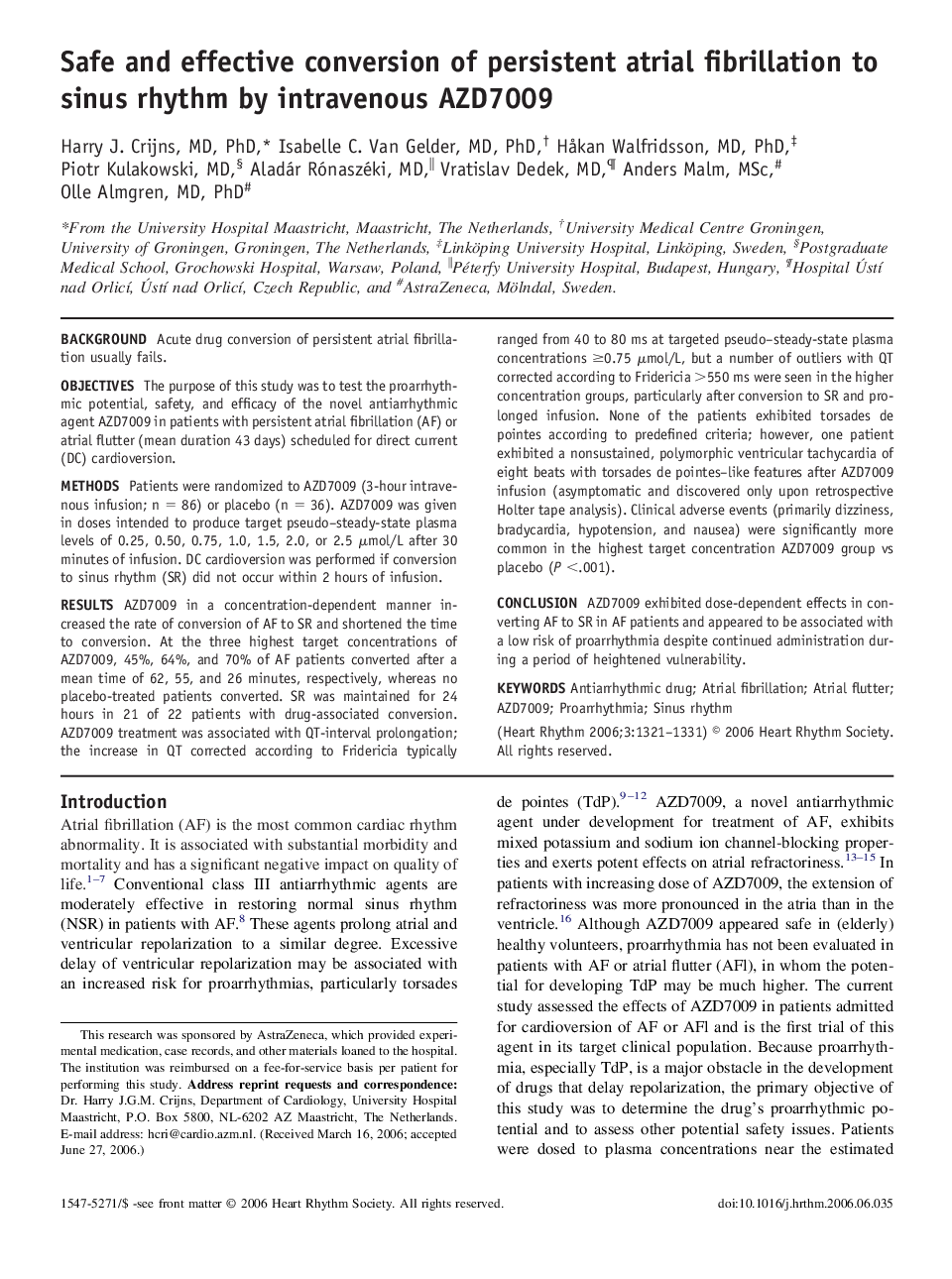| کد مقاله | کد نشریه | سال انتشار | مقاله انگلیسی | نسخه تمام متن |
|---|---|---|---|---|
| 2925553 | 1175954 | 2006 | 11 صفحه PDF | دانلود رایگان |

BackgroundAcute drug conversion of persistent atrial fibrillation usually fails.ObjectivesThe purpose of this study was to test the proarrhythmic potential, safety, and efficacy of the novel antiarrhythmic agent AZD7009 in patients with persistent atrial fibrillation (AF) or atrial flutter (mean duration 43 days) scheduled for direct current (DC) cardioversion.MethodsPatients were randomized to AZD7009 (3-hour intravenous infusion; n = 86) or placebo (n = 36). AZD7009 was given in doses intended to produce target pseudo–steady-state plasma levels of 0.25, 0.50, 0.75, 1.0, 1.5, 2.0, or 2.5 μmol/L after 30 minutes of infusion. DC cardioversion was performed if conversion to sinus rhythm (SR) did not occur within 2 hours of infusion.ResultsAZD7009 in a concentration-dependent manner increased the rate of conversion of AF to SR and shortened the time to conversion. At the three highest target concentrations of AZD7009, 45%, 64%, and 70% of AF patients converted after a mean time of 62, 55, and 26 minutes, respectively, whereas no placebo-treated patients converted. SR was maintained for 24 hours in 21 of 22 patients with drug-associated conversion. AZD7009 treatment was associated with QT-interval prolongation; the increase in QT corrected according to Fridericia typically ranged from 40 to 80 ms at targeted pseudo–steady-state plasma concentrations ≥0.75 μmol/L, but a number of outliers with QT corrected according to Fridericia >550 ms were seen in the higher concentration groups, particularly after conversion to SR and prolonged infusion. None of the patients exhibited torsades de pointes according to predefined criteria; however, one patient exhibited a nonsustained, polymorphic ventricular tachycardia of eight beats with torsades de pointes–like features after AZD7009 infusion (asymptomatic and discovered only upon retrospective Holter tape analysis). Clinical adverse events (primarily dizziness, bradycardia, hypotension, and nausea) were significantly more common in the highest target concentration AZD7009 group vs placebo (P <.001).ConclusionAZD7009 exhibited dose-dependent effects in converting AF to SR in AF patients and appeared to be associated with a low risk of proarrhythmia despite continued administration during a period of heightened vulnerability.
Journal: Heart Rhythm - Volume 3, Issue 11, November 2006, Pages 1321–1331